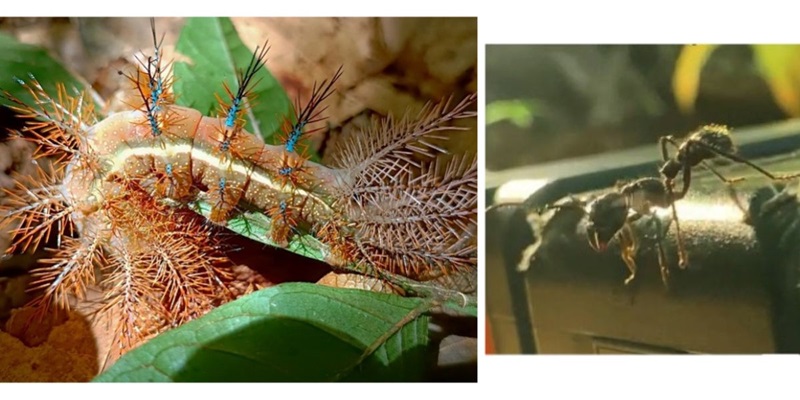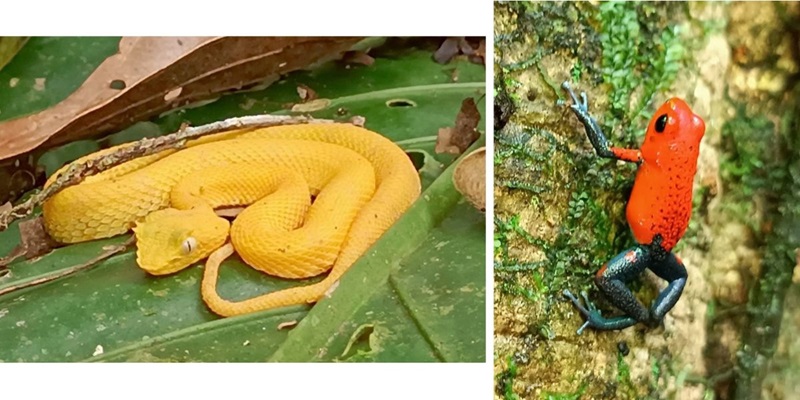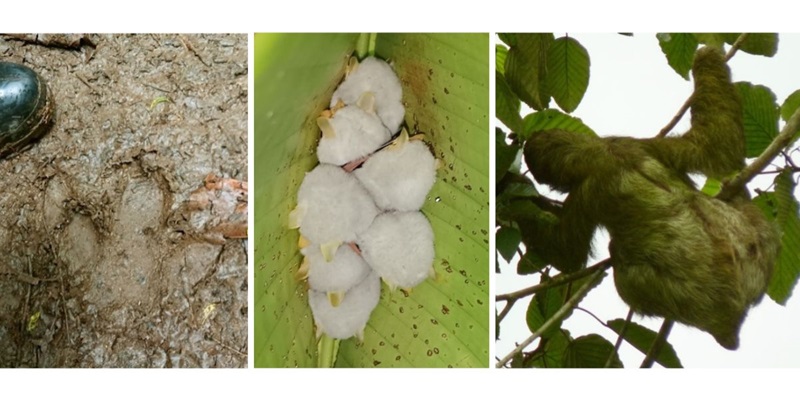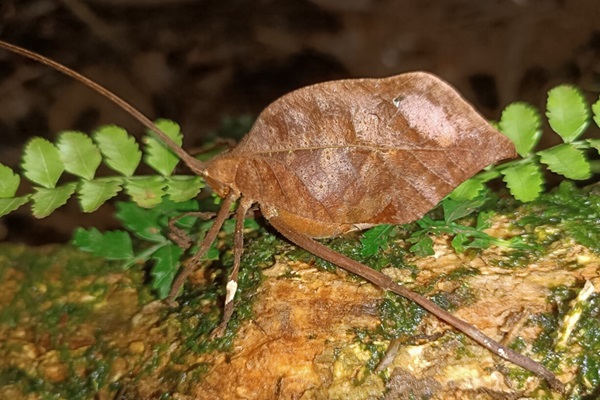Life in the Rainforest: Drexel Professor Confronts Beauty and Venom in Costa Rica
By Sean O'Donnell, PhD
April 18, 2023
 Sean O'Donnell, PhD, is a professor of biodiversity, earth and environmental science and biology at Drexel University. His teaching interests span ecology, evolution and animal behavior, including tropical field courses. He regularly works as an expert science consultant with natural history film crews.
Sean O'Donnell, PhD, is a professor of biodiversity, earth and environmental science and biology at Drexel University. His teaching interests span ecology, evolution and animal behavior, including tropical field courses. He regularly works as an expert science consultant with natural history film crews.
I love spring, for sure—the flowers and sweet scents, balmy breezes, peeping pale green baby leaves—but this year spring feels a bit empty. Too quiet at night, too…safe. I am just back from spending three weeks working as a consultant with a natural history film crew in the rainforest of Costa Rica, and the intensely present life of the tropics still rings in my memory.
Upon arriving from the early temperate zone spring in Philly, the heavy tropical heat was oppressive, but I acclimated and grew comfortable in the natural hothouse. The climate in lowland tropical rain forest is consistently warm and wet. Some say the “dry” season in the rainforest is when it rains every day, and the wet season is when it rains all day. We were lucky to enjoy two weeks of beautiful sunny days, with most rain falling at night. Costa Ricans call this season “verano” (summer).
The tropics are different, special…richer in life. The diversity of tropical species is legendarily high, and ecological interactions are more intense. Predators, parasites, leaf-munchers, decomposers…all work overtime to keep the tropical productivity churning and cycling. Mold grows on everything—my red winter jacket hanging unused in my room had acquired a greenish fuzz when I left for home.
Tropical forests express their exuberance in a rich soundscape. The bio-symphony changes across the day: parakeets, tanagers and flycatchers call as the dawn approaches and howler monkeys roar to greet the sun. Assorted cicadas sing through the day, giving way to katydids, nightjars and several species of owls at night. My second-floor room was open with screened windows on three sides, allowing the nocturnal serenade to shape my dreams.

One of the joys of time spent in the Costa Rican rainforest is the regular but unexpected appearance of amazing little treasures that dazzle. But not all of them are friendly; alert senses are important for avoiding unwanted encounters with venom.
Working in the understory one morning I felt a sharp pain in my elbow. It took several minutes of careful searching to locate the culprit, an impressively spiny stinging caterpillar concealed under a leaf.
Another omnipresent understory companion is the large black bullet ant, named for its painful sting. Bullet ants are not intimidated by humans and demand consistent mindfulness.

Many of the reptile residents are surprising. One famous and abundant Costa Rican character is the blue jeans dart frog. The tiny pugnacious males scamper boldly through the leaf litter and chirp from elevated perches, defended from many predators by the toxic alkaloid compounds in their skin. Above the ground we found a young eyelash viper, venomous but attractively cloaked in bright yellow. Eyelash vipers have several color forms, and the adaptive value of the conspicuous golden form is not well understood.

Back on the ground we were alerted to a cryptic and dangerous fer-de-lance viper, coiled in its daytime resting spot and almost invisible against the leaf litter. This snake moved that night to an unknown spot likely nearby, making us extra cautious as we worked in this area over several days. Walking through the next day, I jumped as a rustling creature zipped between my feet. It turned out to be a false alarm…a casque-headed lizard grabbing a katydid snack. These stoic lizards are not generally known as athletes, and sometimes moss grows atop their broad heads.

Mammals abound in the rainforest but are often subtle. Some pass nearby but are only detected by their tracks, like the Baird’s tapir that strolled by our work site one morning and left huge three-toed tracks.
Late one night I awoke to a strong musky odor and scampering sounds on the balcony outside my room. My entry had a cat-door, which I got up to lock in case a curious arboreal mammal mistook it for an invitation.
A three-toed sloth entertained us in our front yard for a few days, munching the leaves of a tree overhanging the lawn. The greenish tint of their fur is caused by algae that grow on their hairs, possibly helping them blend into their arboreal haunts.
A huddle of Honduran white fruit bats were the star mammals, seven tiny cute yellow-eared snowballs snoozing away the daylight under a Heliconia leaf they had chewed to fold into a cozy tent.

My favorite animal encounter was with a dead-leaf katydid that showed up on the field station bridge one morning. This amazing example of crypsis—a body color and shape that blend into the background—shows the powerful force of predator eyes in driving the evolution of prey animal appearance. The brown katydid was shaped like a dead leaf blade, wavy and crinkled when viewed from above. The forewings had the impression of a central leaf vein and leaf-like texture that included seeming stomatal pores. An apparently decayed clearer window of rot and caterpillar damage near the upper corner and patches of white “fungus” on the middle legs added to the compelling visual case for not being a katydid. Not surprisingly, this gentle insect was largely immobile showing leaf like behavior, and it did not attempt to flee after handling and (possibly tedious) photography.
I look forward to returning to the Costa Rican rainforest and hope for a chance to see the large jaguar whose tracks revealed it had passed near our filming site.